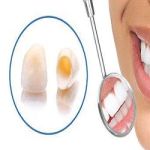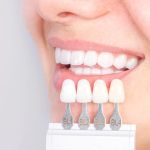What Are Dental Sealants?
Dental sealants are thin, plastic coatings that are applied to the chewing surfaces of teeth. They act as a protective barrier, especially in the grooved and pitted areas of premolars and molars. These areas are often difficult to clean thoroughly, making them prone to cavity formation. Dental sealants work by sealing off these vulnerable spots, preventing plaque and food from getting trapped and causing decay.
The Benefits of Dental Sealants for Kids
Dental sealants provide significant protection against cavities. Studies have shown that they can prevent up to 80% of cavities in the back teeth, where 9 in 10 cavities occur. For children, especially those from low-income families who may have less access to regular dental care, dental sealants can be a game-changer. They not only reduce the risk of cavities but also save on future dental treatment costs.
When Are Dental Sealants Recommended for Kids?
It's typically recommended that children between the ages of six and 14 receive dental sealants. The first molars usually emerge around age six, and the second molars around age 12. Sealing these teeth as soon as they come through helps protect them from tooth decay. In some cases, even baby teeth with deep grooves or pitted areas may benefit from dental sealants.
The Application Process of Dental Sealants
The process of applying dental sealants is quick, easy, and painless. First, the dentist cleans and dries the tooth. Then, an acidic gel is applied to roughen the surface for better adhesion. After rinsing and drying again, the liquid sealant is applied and hardened using a blue light. Dentists will monitor the condition of the sealants over time and suggest reapplications if necessary.
Common Concerns and FAQs about Dental Sealants
One common concern is the presence of bisphenol A (BPA) in dental sealants. However, the amount is negligible and poses no significant harm compared to other daily exposures. Another concern is the possibility of an allergic reaction, but this is rare. If you or your child have allergies or any concerns, it's best to discuss them with the dentist.
Oral Hygiene Tips for Kids Alongside Dental Sealants
While dental sealants offer great protection, they are not a substitute for a good oral hygiene routine. Encourage children to brush twice a day with fluoride toothpaste, floss daily, eat healthy snacks, and visit the dentist regularly. Teaching them these habits from an early age will set them up for a lifetime of good oral health.
School Sealant Programs and Their Impact
School sealant programs play a vital role in improving children's oral health. These programs reach children who may not have regular access to dental care and provide sealants to those at high risk of cavities. They are cost-effective and can make a significant difference, especially in lower-income communities.
Conclusion
In conclusion, dental sealants are a valuable tool in preventing cavities for kids. They offer long-lasting protection, are easy to apply, and have minimal risks. By combining dental sealants with proper oral hygiene and participation in school sealant programs if available, we can ensure that children have healthy, cavity-free teeth and a positive attitude towards oral care for life. It's a small investment that can lead to big rewards in terms of children's oral health and overall well-being.


 WestgateRx Dentist
WestgateRx Dentist Small World Dental - Pediatric Dentist and Orthodontist
Small World Dental - Pediatric Dentist and Orthodontist Dr. David Miller DDS
Dr. David Miller DDS Southcoast Endodontics
Southcoast Endodontics Westborough Family Dental
Westborough Family Dental EON Clinics
EON Clinics The Importance of Oral Health Education During Pregnancy for a Healthy Pregnancy
The Importance of Oral Health Education During Pregnancy for a Healthy Pregnancy Why Skipping Dental Checkups Can Lead to Bigger Oral Health Problems
Why Skipping Dental Checkups Can Lead to Bigger Oral Health Problems Advantages of Porcelain Dental Restorations
Advantages of Porcelain Dental Restorations Best Tips for Brushing Your Teeth Properly for Healthy Gums: Essential Techniques for Oral Health
Best Tips for Brushing Your Teeth Properly for Healthy Gums: Essential Techniques for Oral Health How Can Diabetes Cause Tooth and Gum Problems? Preventing and Managing Oral Health Issues
How Can Diabetes Cause Tooth and Gum Problems? Preventing and Managing Oral Health Issues Healthy Habits for Promoting Good Oral Health and Hygiene: Tips for a Healthy Smile
Healthy Habits for Promoting Good Oral Health and Hygiene: Tips for a Healthy Smile